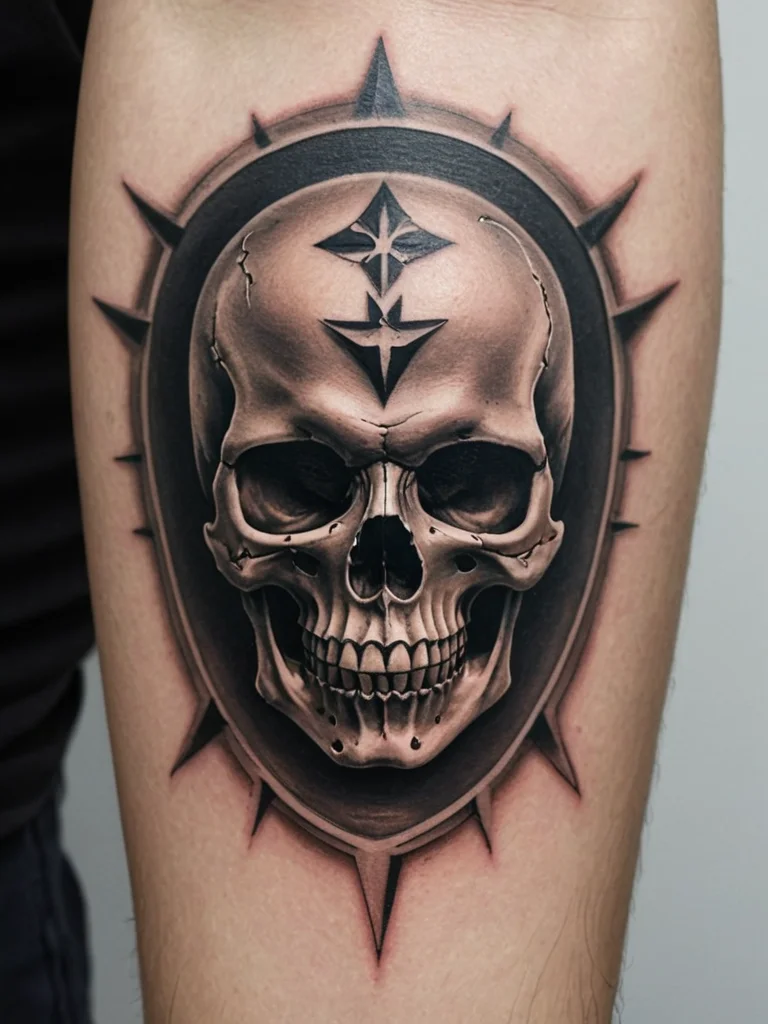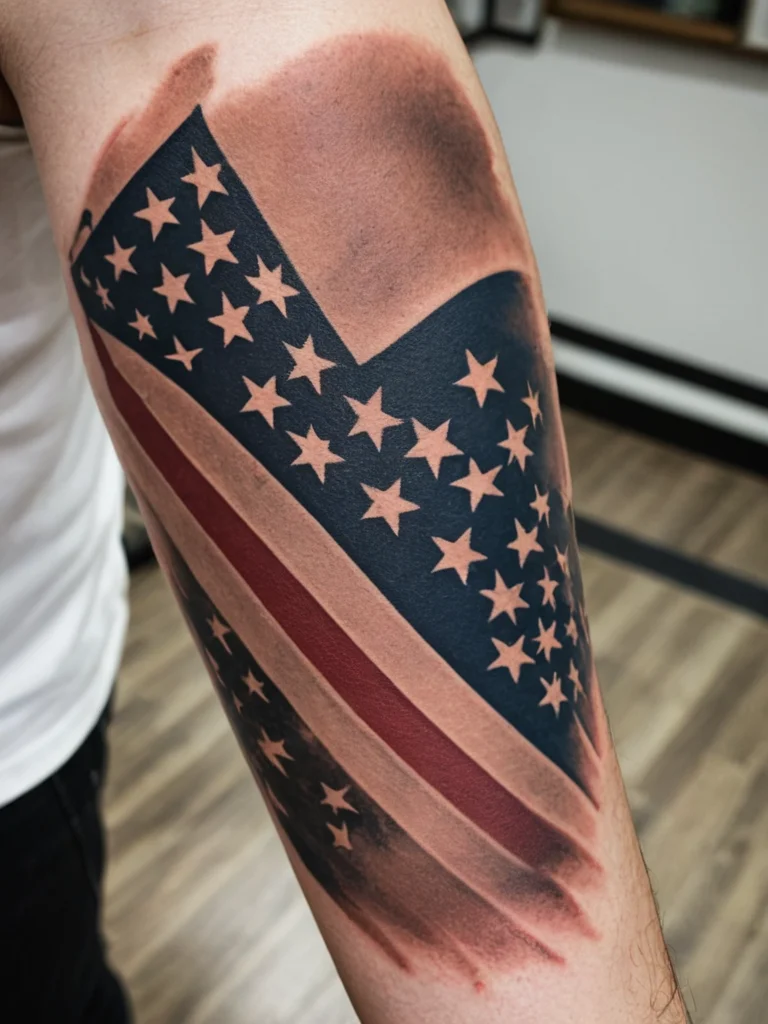The question of whether a tattoo can impact your ability to obtain or maintain a security clearance is a complex one, fraught with misconceptions and often fueled by anecdote rather than clear-cut policy. If you’re pursuing a career in government, the military, or any field requiring access to classified information, you’re likely already aware of the rigorous background checks and scrutiny involved. While tattoos themselves aren’t inherently disqualifying, the imagery, location, and context surrounding them can indeed raise concerns and warrant further investigation. It’s crucial to understand the nuances of this issue and how to navigate the process transparently.
Can a tattoo really affect your security clearance? the honest answer
The short answer is yes, a tattoo can affect your security clearance, but it’s rarely a simple ‘yes’ or ‘no’. The government’s primary concern during security clearance investigations is your trustworthiness and reliability. This includes assessing your allegiance to the United States, your susceptibility to coercion or blackmail, and your overall judgment and character. Tattoos, like any other form of self-expression, can provide insights into these areas, and certain types of tattoos might trigger a closer look.
The key lies in understanding what the adjudicators – the individuals responsible for making clearance decisions – are looking for. They’re not arbitrarily disqualifying people based on body art. Instead, they are evaluating whether your tattoos suggest any potential issues that could compromise national security. These issues might include affiliation with extremist groups, a history of criminal activity, or a vulnerability to manipulation.
Consider this analogy: imagine you’re applying for a loan. Your credit score is a major factor, but the bank will also look at your income, your employment history, and any outstanding debts. A low credit score might raise a red flag, but it doesn’t automatically disqualify you. The bank will want to understand the reasons behind it and assess your overall financial stability. Similarly, a controversial tattoo might prompt a deeper investigation into your background and character, but it’s just one piece of the puzzle.
Ultimately, the impact of a tattoo on your security clearance depends on a variety of factors, including:
- The content of the tattoo: What does the tattoo depict? Does it promote violence, hatred, or discrimination? Does it endorse any extremist ideologies or illegal activities?
- The location of the tattoo: Where on your body is the tattoo located? Highly visible tattoos, particularly those on the face, neck, or hands, might draw more attention.
- The context of the tattoo: When and why did you get the tattoo? What does it mean to you? Can you provide a reasonable explanation for its presence?
- Your overall background: What is your history of employment, education, and personal conduct? Do you have any prior criminal convictions or disciplinary actions?
It’s crucial to remember that the security clearance process is designed to assess risk. The adjudicators are tasked with determining whether you pose an unacceptable threat to national security. Your tattoos, like any other aspect of your life, will be evaluated in this context. Transparency and honesty are paramount throughout the process. Attempting to conceal or misrepresent information about your tattoos will almost certainly raise red flags and could jeopardize your chances of obtaining or maintaining a clearance.
Tattoos that raise red flags: symbols and statements to avoid

While the presence of tattoos alone isn’t a guaranteed disqualifier for a security clearance, certain types of imagery and statements can significantly increase the risk of denial. Adjudicators are trained to identify symbols and messages that may indicate affiliation with extremist groups, criminal organizations, or ideologies that are antithetical to U.S. values. If you have tattoos that fall into these categories, it’s crucial to be prepared to address them honestly and thoroughly during your security clearance application.
Here are some examples of tattoo themes that may raise red flags:
- Hate symbols: Tattoos featuring symbols associated with hate groups, such as the swastika, the Confederate flag (in certain contexts), or symbols of white supremacy, are highly problematic. These symbols are widely recognized as representing ideologies of hate, discrimination, and violence.
- Gang-related tattoos: Tattoos associated with criminal gangs, particularly those that indicate membership or allegiance, are a major concern. These tattoos may suggest a history of criminal activity or ongoing involvement with criminal organizations.
- Extremist ideologies: Tattoos that promote extremist political or religious ideologies, particularly those that advocate violence or the overthrow of the government, are a serious red flag. This could include symbols of radical Islamist groups, far-left extremist organizations, or other groups that pose a threat to national security.
- Anti-government sentiments: While expressing dissenting opinions is a protected right, tattoos that explicitly advocate violence against the government or express extreme anti-government sentiments may raise concerns about your allegiance to the United States.
- Drug-related imagery: Tattoos depicting drug use, drug paraphernalia, or symbols associated with drug trafficking can suggest a history of substance abuse or involvement in illegal activities.
- Offensive or discriminatory content: Tattoos that are sexually explicit, racially offensive, or promote discrimination against any group are likely to be viewed negatively. These tattoos may suggest a lack of judgment or a disregard for the values of diversity and inclusion.
- Symbols of foreign adversaries: Tattoos displaying symbols of countries or organizations that are considered adversaries of the United States can raise questions about your loyalty and potential vulnerability to foreign influence.
It’s important to note that the interpretation of a tattoo can be subjective and context-dependent. A symbol that might be considered offensive in one context could have a different meaning in another. For example, a Celtic cross, while sometimes associated with white supremacist groups, is also a symbol of Irish heritage. The adjudicators will consider the overall context of the tattoo, including your personal explanation and your broader background, when making their assessment.
If you have a tattoo that could potentially be misinterpreted, it’s crucial to be prepared to provide a clear and compelling explanation of its meaning and significance to you. Be honest and forthcoming about your reasons for getting the tattoo and address any potential concerns directly. You might also consider providing documentation or references to support your explanation. For example, if you have a tattoo of a historical symbol, you could provide information about its historical context and its significance to your cultural heritage.
In some cases, you might even consider having the tattoo removed or covered up. While this is not always necessary, it can be a way to proactively address potential concerns and demonstrate your commitment to obtaining or maintaining your security clearance. However, it’s important to consult with a security clearance attorney or advisor before making any decisions about tattoo removal, as it could potentially raise additional questions if not handled properly. The key is to be prepared, transparent, and proactive in addressing any potential concerns related to your tattoos.
The disclosure process: how to report tattoos during your security clearance application

Transparency is paramount when applying for a security clearance. Failing to disclose information, including details about your tattoos, can be far more damaging than the tattoos themselves. The security clearance process relies heavily on the principle of self-reporting, and any attempt to conceal information will be viewed as a serious lapse in judgment and trustworthiness. The disclosure process typically involves answering specific questions on the security clearance application form (e.g., SF86) and providing additional details as requested.
Here’s a breakdown of the steps you should take to properly disclose your tattoos:
- Review the security clearance application form carefully: Pay close attention to the sections that ask about tattoos, body art, or other forms of self-expression. The specific wording of the questions may vary depending on the type of clearance you’re applying for, but the general intent is to gather information about any tattoos that could potentially raise security concerns.
- Be honest and thorough in your responses: Don’t attempt to downplay or conceal any tattoos. Provide accurate information about the content, location, size, and meaning of each tattoo. If you’re unsure about the meaning of a particular symbol, do your research and provide the best possible explanation.
- Provide detailed explanations: Don’t just state that you have a tattoo. Explain why you got the tattoo, what it means to you, and any relevant context surrounding it. If the tattoo has a personal or cultural significance, be sure to explain that. If you’ve had the tattoo for a long time and your views have changed, explain how your perspective has evolved.
- Include photographs (if possible): Some security clearance applications may allow you to upload photographs of your tattoos. If this is an option, take clear, well-lit photos that accurately depict the tattoos. This will help the adjudicators understand the imagery and assess any potential concerns.
- Address any potential concerns proactively: If you have a tattoo that you think might raise red flags, address those concerns directly in your explanation. Explain why you believe the tattoo is not a security risk and provide any supporting information. For example, if you have a tattoo of a symbol that could be misinterpreted, explain its true meaning and your reasons for getting it.
- Be prepared to discuss your tattoos during your interview: The security clearance investigation process typically includes an interview with an investigator. Be prepared to answer questions about your tattoos and provide any additional information that may be requested. Be honest, forthcoming, and respectful throughout the interview.
It’s important to remember that the disclosure process is not an interrogation. The adjudicators are not trying to trick you or catch you in a lie. They are simply trying to gather information to assess your trustworthiness and reliability. By being honest, thorough, and proactive in your disclosures, you can demonstrate your commitment to the security clearance process and increase your chances of a favorable outcome.
Consider this scenario: you have a tattoo of a tribal design that you got during a backpacking trip through Southeast Asia. While the design itself is not inherently offensive or problematic, it could be unfamiliar to the adjudicators. In your disclosure, you should explain the origin of the design, its cultural significance, and your reasons for getting it. You might also include photographs of the design in its original context or provide references to reputable sources that explain its meaning. By providing this level of detail, you can help the adjudicators understand the tattoo and avoid any potential misinterpretations.
Minimizing the impact: steps you can take to address tattoo-related concerns
If you’re concerned that your tattoos might negatively impact your security clearance application, there are several steps you can take to mitigate the potential risks. Proactive measures can demonstrate your commitment to national security and address any concerns the adjudicators might have. These steps range from providing thorough explanations to considering tattoo modification or removal.
Here are some strategies to minimize the impact of tattoos on your security clearance:
- Provide detailed and honest explanations: As emphasized earlier, transparency is key. For each tattoo, prepare a comprehensive explanation that addresses its meaning, origin, and personal significance. Explain why you chose the design, when you got it, and any relevant context surrounding it. If your views on the tattoo have changed over time, acknowledge that and explain how your perspective has evolved.
- Offer supporting documentation: If possible, provide documentation that supports your explanation. This could include photographs of the tattoo in its original context, articles or books that explain the meaning of the symbols, or letters of reference from people who can vouch for your character and integrity.
- Consider tattoo modification or removal: If you have a tattoo that is clearly problematic or offensive, you might consider having it modified or removed. Tattoo removal technology has advanced significantly in recent years, making it possible to erase or significantly fade unwanted tattoos. If you choose to pursue this option, be sure to consult with a qualified dermatologist or tattoo removal specialist. Keep in mind that the process can be time-consuming and expensive, and it may not completely eliminate the tattoo. However, even partial removal can demonstrate your commitment to addressing potential concerns. Tattoo modification involves altering the design of the tattoo to make it less offensive or problematic. This could involve adding elements to the design, changing the colors, or covering up certain parts of the tattoo.
- Demonstrate a commitment to positive change: If you have a tattoo that reflects past mistakes or poor judgment, demonstrate that you have learned from those experiences and are committed to making positive changes in your life. This could involve participating in community service, volunteering for charitable organizations, or pursuing educational opportunities.
- Seek professional guidance: If you’re unsure about how to address tattoo-related concerns in your security clearance application, consider seeking guidance from a security clearance attorney or advisor. These professionals can provide valuable insights and advice on how to navigate the process and present your case in the most favorable light.
- Be prepared for scrutiny: Even if you take all of the above steps, you should be prepared for scrutiny from the adjudicators. They may ask you detailed questions about your tattoos and your reasons for getting them. Be patient, respectful, and honest in your responses. Remember that the goal is to demonstrate your trustworthiness and reliability.
Imagine you have a tattoo of a symbol that was once associated with a controversial group, but you got it before you were aware of its negative connotations. You’ve since disavowed the group and regret getting the tattoo. In this situation, you could provide a detailed explanation of your past beliefs and how they have changed. You could also provide evidence of your current commitment to positive values and your rejection of the group’s ideology. You might even consider modifying the tattoo to remove any association with the group. By taking these steps, you can demonstrate that you are not a security risk and that you are committed to upholding the values of the United States.
Real-life examples: how tattoos have (and haven’t) affected security clearances

The impact of tattoos on security clearances is often discussed in abstract terms, but real-life examples can provide valuable insights into how the process actually works. While specific details of individual cases are often confidential, it’s possible to glean general trends and lessons from publicly available information and anecdotal accounts. These examples illustrate that the outcome depends heavily on the specific circumstances of each case, including the content of the tattoos, the applicant’s overall background, and their willingness to be transparent and forthcoming.
Here are some hypothetical examples, based on real-world scenarios, illustrating how tattoos can affect security clearance decisions:
- Example 1: The remorseful gang member. A young man with a history of gang involvement applies for a security clearance to join the military. He has several gang-related tattoos, but he has since left the gang and is actively working to turn his life around. He discloses his tattoos on his application and provides a detailed explanation of his past involvement in the gang and his current efforts to rehabilitate himself. He also submits letters of reference from community leaders and mentors who can vouch for his character. The adjudicators carefully consider his case and ultimately grant him a clearance, based on his demonstrated commitment to positive change and his willingness to be transparent about his past.
- Example 2: The misinterpreted symbol. A woman applies for a security clearance to work for a government agency. She has a tattoo of a symbol that is sometimes associated with a controversial political movement. However, she explains that she got the tattoo as a tribute to her cultural heritage and that she does not support the movement’s ideology. She provides documentation to support her explanation and is able to convince the adjudicators that her tattoo does not pose a security risk. She is granted a clearance.
- Example 3: The concealed tattoo. An applicant for a security clearance attempts to conceal a tattoo that depicts a hate symbol. During the investigation, the tattoo is discovered, and the applicant is confronted about it. He denies knowing the meaning of the symbol and claims that he got the tattoo on a whim. The adjudicators find his explanation to be unconvincing and deny him a clearance, based on his lack of candor and his potential affiliation with extremist ideologies.
- Example 4: The offensive tattoo. An applicant has a tattoo that is deemed sexually explicit and offensive. While the tattoo isn’t related to any specific extremist group or illegal activity, the adjudicators find that it demonstrates poor judgment and a lack of respect for professional standards. The applicant is denied a security clearance.
- Example 5: The applicant with multiple tattoos. An applicant has several large, visible tattoos, none of which are inherently problematic. However, the sheer number and visibility of the tattoos raise concerns about the applicant’s conformity to military standards and their potential to distract from their duties. After careful consideration, and an interview with the applicant, the clearance is granted as the applicant demonstrated sound judgement and reasoning for their body art.
These examples highlight the importance of honesty, transparency, and context in the security clearance process. While certain tattoos can indeed raise red flags, they are not automatically disqualifying. By being prepared to address any potential concerns proactively and by demonstrating a commitment to positive values, you can increase your chances of obtaining or maintaining a security clearance, even with tattoos.
The key takeaway is that each case is evaluated on its own merits, and the adjudicators will consider the totality of the circumstances when making their decision. Your tattoos are just one piece of the puzzle, and your overall character, conduct, and trustworthiness will ultimately determine the outcome.